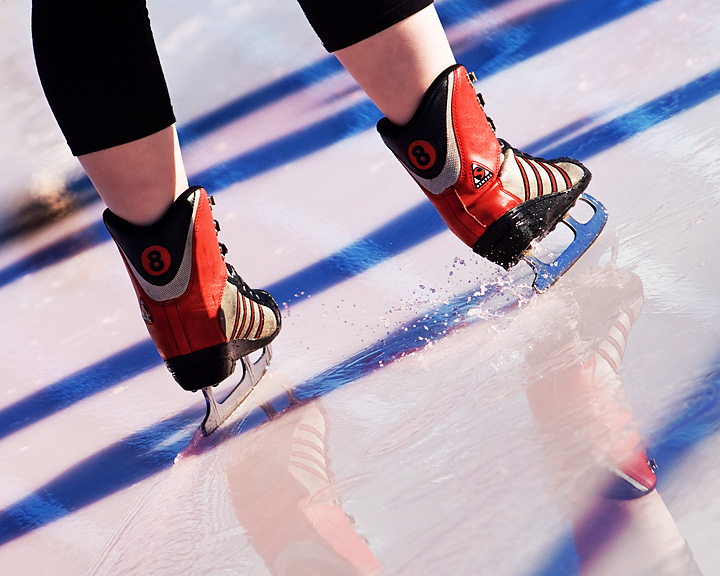Skatertub : February 11, 2009

Image Data
File Name: 50D_10047
Model: Canon EOS 50D
Lens: Canon EF 70-200mm F/2.8L USM
Date: 02.07.09 3:02pm
Focal Length: 200mm (320mm)
Shutter: 1/1600 s
F-Stop: F4
ISO: 100
Program: Aperture priority
Metering Mode: Evaluative
Flash: Off
Focus Mode: AI servo AF
File Name: 50D_10047
Model: Canon EOS 50D
Lens: Canon EF 70-200mm F/2.8L USM
Date: 02.07.09 3:02pm
Focal Length: 200mm (320mm)
Shutter: 1/1600 s
F-Stop: F4
ISO: 100
Program: Aperture priority
Metering Mode: Evaluative
Flash: Off
Focus Mode: AI servo AF
Ice skating works because the metal blade at the bottom of the ice skate shoe can glide with very little friction over the surface of the ice (ice has a minimum kinetic friction at 19°F). Slightly leaning the blade over and digging one of its edges into the ice gives skaters the ability to increase friction and control their movement at will. In addition, by choosing to move along curved paths while leaning their bodies radially and flexing their knees, skaters can use gravity to control and increase their momentum. They can also create momentum by pushing the blade against the curved track which it cuts into the ice. Skillfully combining these two actions of leaning and pushing results in what looks like effortless and graceful curvilinear flow across the ice.















 Subscribe
Subscribe


